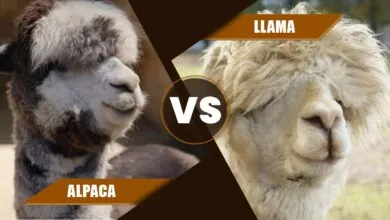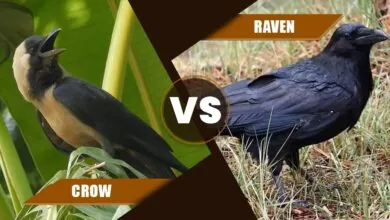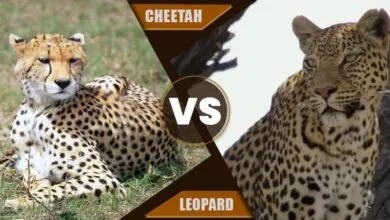Lion vs. Tiger Crown Clash: Unveiling the Kings of the Animal Kingdom!
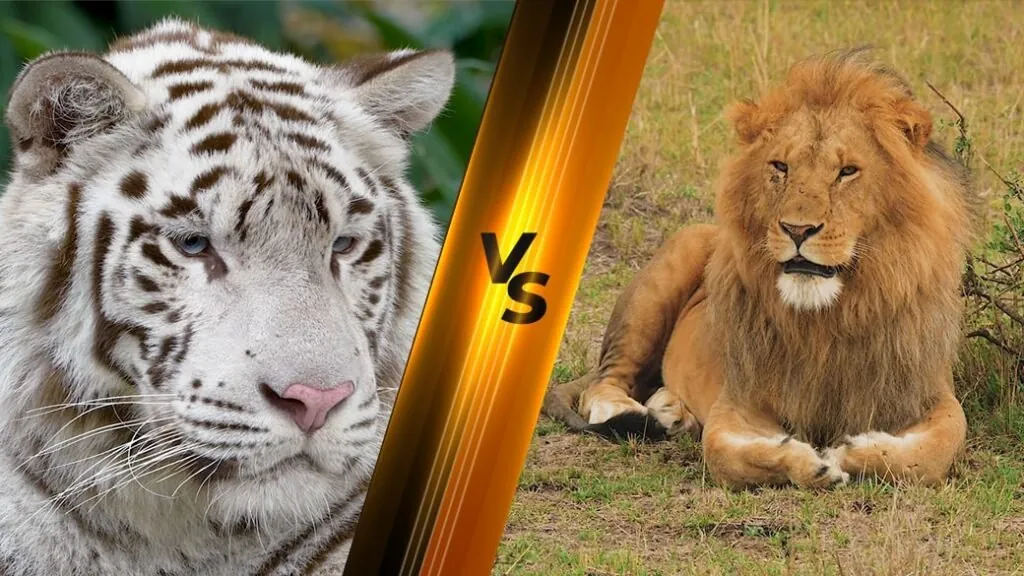
Paint a mental image: the dense jungles of Asia and the stretched plains of Africa collide in a grand showdown. On one side, there stands the proud lion, mane glistening in the sun. On the flip side, the sleek tiger having stripes blending into the shadows. Who in your perception would win in this legendary face-off? Yes, this’s about “lion vs. tiger.”
Cast your vote in your own mind and hop on with us to dive deep into the striking world of these two magnificent creatures; here we’re going to spotlight the mystery named “lion vs. tiger.” Without further ado, let’s get started!
| Attribute | Lion | Tiger |
|---|---|---|
| Scientific Name | Panthera leo | Panthera tigris |
| Number of Species | 1 main species with several subspecies (e.g., Asiatic lion, African lion) | 1 main species with several subspecies (e.g., Bengal, Siberian, Sumatran, etc.) |
| Height | 1.2m at the shoulder (male) | 0.9 to 1.1m at the shoulder |
| Length | 1.7 to 2.5m (excluding tail) | 1.4 to 3.9m (excluding tail, depending on the subspecies) |
| Weight | Males: 190-230kg; Females: 120-180kg | Varies greatly with subspecies. Bengal males: 220-260kg; Siberian males: can exceed 300kg |
| Top Speed | Approximately 50-60km/h | Approximately 55-65km/h |
| Habitat | Grasslands, savannas, open woodlands, and scrublands | Varied, ranging from rainforests, grasslands, swamps, and deciduous forests. |
| Prey / Diet | Wildebeest, Zebras, Buffalo | Sambar deer, Chital (spotted deer), Wild boar |
| Bite Force | Around 650 PSI (pounds per square inch) | Around 1,050 PSI (pounds per square inch) |
| Lifespan | 10-14 years in the wild; up to 20 years in captivity | 10-15 years in the wild; up to 20-25 years in captivity |
| Distinctive Feature | Mane (in males) | Striped pattern |
| Conservation Status | Vulnerable | Endangered |
Cultural and Historical Significance
Ancient Myths
Lion, Africa’s regal predator, was revered in ancient Egypt, signifying royalty and power. Tiger, Asia’s striped sovereign, was the emblem of strength and courage and had presence in ancient Chinese and Indian folklore.
Cultural Significance
Lions, most often than not, symbolize bravery, leadership and strength in Western and African cultures. But then again, tigers, revered in multiple Asian cultures, often signify beauty, power and the wild’s shadowy allure.
Physical Characteristics
Shedding some light on the physical characteristics of both animals will certainly make the world of “lion vs. tiger” crystal clear.
Size
Adult male lions generally have weight around 190-230kg and stand about 1.2m tall. Contrarily, male tigers, especially the Siberian, can exceed 300kg and reach a shoulder height of 1.1m.
Coat
When it comes to the coat of lions, they are characterized by a tawny coat, with males showcasing a distinctive mane. In contrast, tigers boast a fiery orange coat with black stripes, each pattern unparalleled to the individual.
The tiger and cheetah, both formidable hunters, showcase extraordinary speed in their unique ways, with the cheetah excelling in sprints and the tiger demonstrating agility in pursuit.
Habitat and Distribution
Natural Habitats
Lion, the king of jungle, inhabits Africa’s grasslands, open woodlands and savannas, with a small Asiatic population in India’s Gir Forest. Tiger prioritizes swamps, dense forests and grasslands across Asia.
Range
Lions dominate Sub-Saharan Africa; tigers, by contrast, have territories stretching from Siberia in Russia to Sumatra in Indonesia.
Behavior and Lifestyle
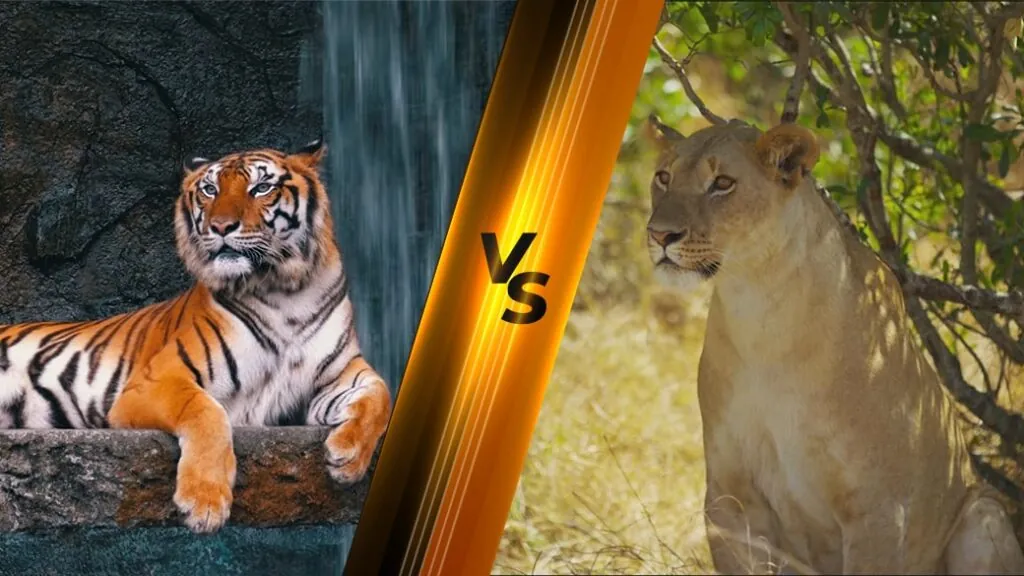
Spotlighting the social behavior, hunting techniques and activities of these creatures will illuminate the notion of lion vs. tiger.
Social Behavior
Among big cats, lions are unique for their social structure, building prides. Tigers, marking and defending spanned territories, are solitary.
Hunting Techniques
Lions, using cooperative strategies, encircle and ambush their prey. Tigers, on the flip side, rely on stealth, making use of their striped camouflage to get close before launching a robust ambush.
Speed and Strength
Owing to their dominant leg muscles, lions can reach the speeds of up to 50 – 60 km (31-37 mph) in short bursts. Tigers are slightly faster as compared to lions can reach the speeds of up to 55-65 km/h (34-40 mph). Nonetheless, like lions, they excel in short, explosive bursts, normally over a few dozen meters.
Another aspect of lion vs. tiger is the strength of these creatures. On the part of lions, the social hunting strategy of them allows them to have an advantage – they work in groups to take down larger prey like buffaloes. Conversely, tigers, among big cats, are often considered the most powerful. Their gigantic size, particularly in the case of the Siberian and Bengal subspecies, in conjunction with a muscular build, let them tackle formidable prey like wild boar, deer and even bears.
Conservation Status
IUCN Status
Concurrently, lions are classified as “Vulnerable,” while tigers, encountering more dire circumstances, are “Endangered.”
Threats
The main threats these animals are facing encompass human-wildlife conflict, habitat loss and poaching for body parts.
Population Trend
The population trend, on the part of lions, is declining, particularly in West Africa. Fewer than 25,000 remain in the wild, with some estimates even lower. With respect to tigers, the population trend is declining overall, but some conservation efforts, particularly in India and Nepal have depicted positive results.
In Popular Culture
Movies
Lion is a recurring emblem of majesty and leadership in cinema. Movies like Disney’s “The Lion King” showcase a detailed narrative about the life of a lion. The character Aslan in “The Chronicles of Narnia” series by C.S. Lewis presents a lion as a wise, benevolent and powerful leader.
Tiger is most often than not portrayed as powerful and mysterious creature. A movie named “Life of Pi” by Yann Martel, adapted into an acclaimed piece, dig deep into the multifaceted bound between a young boy and a Bengal tiger stranded on a lifeboat, unveiling the themes of survival and faith.
Literature
Aesop’s fables often presented lion to impart moral lessons. “The Old Man and the Sea” by Ernest Hemingway describes lion as their mascot, signifying strength, pride and dominance.
Whenever it comes to the place of tiger in literature, “The Jungle Book” by Rudyard Kipling twinkles in our mind; it offers a darker portrayal of tiger through the character Shere Khan, showcasing the perils of the wild.
Brands and Logos
MGM’s roaring lion is an iconic start to numerous movies, while brands like Peugeot have used lion as an icon of luxury and strength. Tiger is popular in branding, from energy drinks like “Tiger” to the mascot of cereal brands like “Frosted Flakes” with Tony the Tiger.
